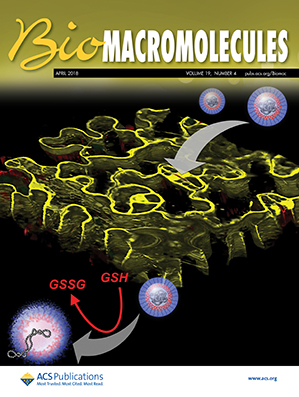用于破坏蛋白质-蛋白质相互作用的聚合物:我们在哪里,我们应该在哪里?
IF 5.5
2区 化学
Q1 BIOCHEMISTRY & MOLECULAR BIOLOGY
引用次数: 0
摘要
蛋白质-蛋白质相互作用(PPI)是细胞信号传导和调控网络的核心,是许多生理和病理生理过程的基础。由于在大而扁平的 PPI 接口上经常缺乏定义明确的结合口袋,因此使用传统的小分子或多肽方法来靶向 PPI 具有挑战性。合成聚合物提供了规避这些挑战的机会,因为它在调整其理化性质以实现所需的结合特性方面具有无与伦比的灵活性。在本综述中,我们总结了溶液中聚合物与蛋白质相互作用领域的现状,重点介绍了各种聚电解质系统、其可调参数及其表征。我们展望了如何通过结合序列控制、可折叠性和机器学习来改进这些体系结构,从而在各个结构层次上模拟蛋白质。在这些方向上取得的进展将有助于设计更具特异性的蛋白质结合聚合物,并为靶向动态蛋白质(如内在无序蛋白质)提供有效策略。本文章由计算机程序翻译,如有差异,请以英文原文为准。

Polymers for Disrupting Protein–Protein Interactions: Where Are We and Where Should We Be?
Protein–protein interactions (PPIs) are central to the cellular signaling and regulatory networks that underlie many physiological and pathophysiological processes. It is challenging to target PPIs using traditional small molecule or peptide-based approaches due to the frequent lack of well-defined binding pockets at the large and flat PPI interfaces. Synthetic polymers offer an opportunity to circumvent these challenges by providing unparalleled flexibility in tuning their physiochemical properties to achieve the desired binding properties. In this review, we summarize the current state of the field pertaining to polymer–protein interactions in solution, highlighting various polyelectrolyte systems, their tunable parameters, and their characterization. We provide an outlook on how these architectures can be improved by incorporating sequence control, foldability, and machine learning to mimic proteins at every structural level. Advances in these directions will enable the design of more specific protein-binding polymers and provide an effective strategy for targeting dynamic proteins, such as intrinsically disordered proteins.
求助全文
通过发布文献求助,成功后即可免费获取论文全文。
去求助
来源期刊

Biomacromolecules
化学-高分子科学
CiteScore
10.60
自引率
4.80%
发文量
417
审稿时长
1.6 months
期刊介绍:
Biomacromolecules is a leading forum for the dissemination of cutting-edge research at the interface of polymer science and biology. Submissions to Biomacromolecules should contain strong elements of innovation in terms of macromolecular design, synthesis and characterization, or in the application of polymer materials to biology and medicine.
Topics covered by Biomacromolecules include, but are not exclusively limited to: sustainable polymers, polymers based on natural and renewable resources, degradable polymers, polymer conjugates, polymeric drugs, polymers in biocatalysis, biomacromolecular assembly, biomimetic polymers, polymer-biomineral hybrids, biomimetic-polymer processing, polymer recycling, bioactive polymer surfaces, original polymer design for biomedical applications such as immunotherapy, drug delivery, gene delivery, antimicrobial applications, diagnostic imaging and biosensing, polymers in tissue engineering and regenerative medicine, polymeric scaffolds and hydrogels for cell culture and delivery.
 求助内容:
求助内容: 应助结果提醒方式:
应助结果提醒方式:


